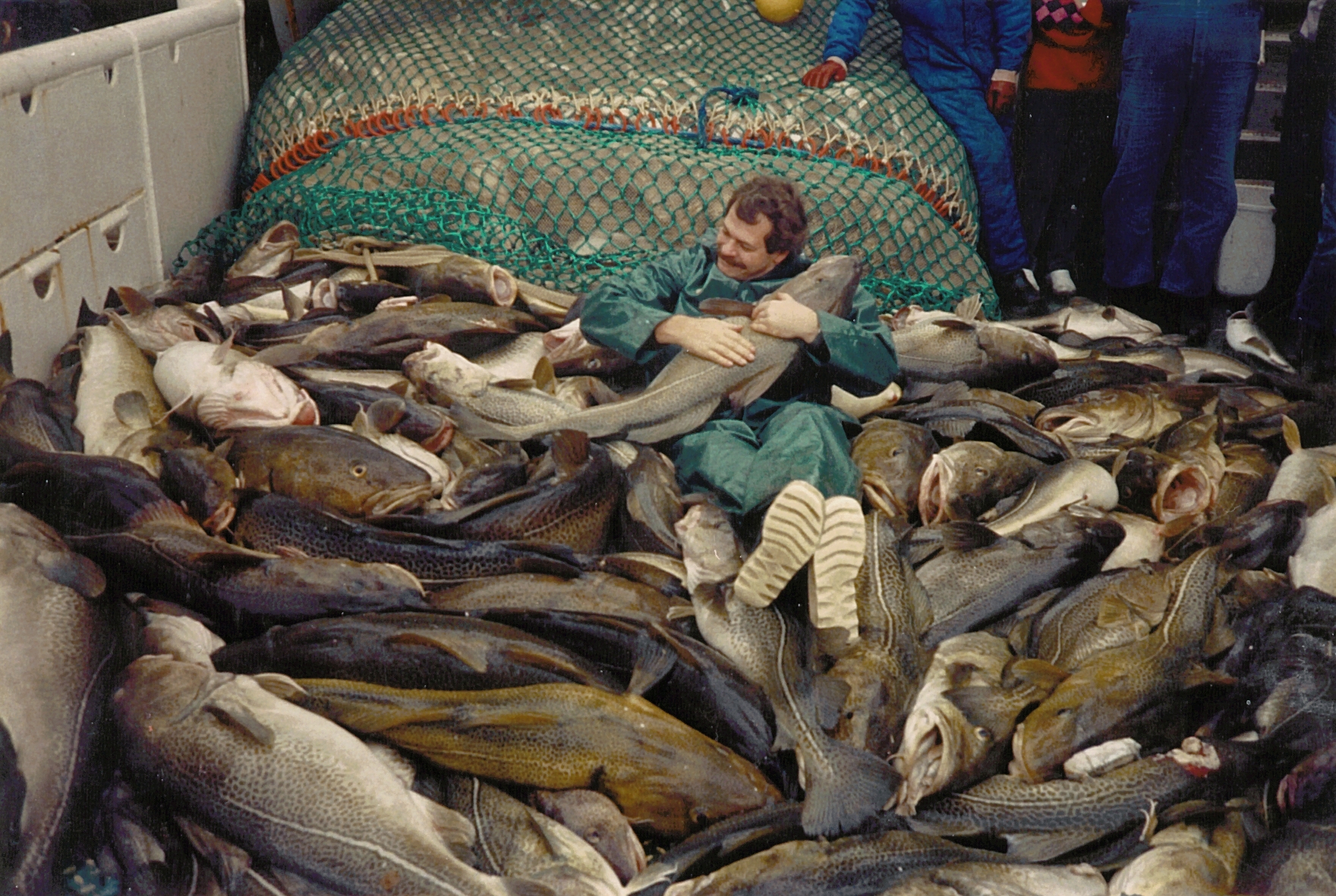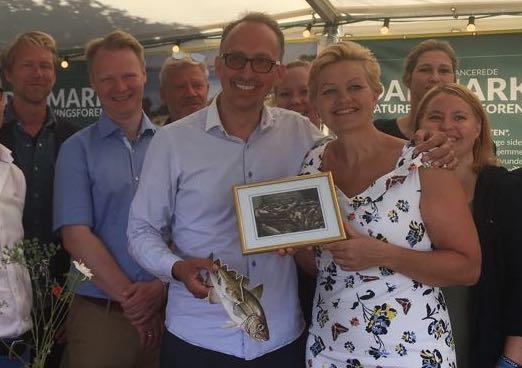The alarming situation for the Baltic cod stocks was a top priority in conversations between FishSec representatives and Danish Minister of Fisheries, Eva Kjer Hansen, this past weekend. The Minister attended a breakfast meeting with FishSec, Oceana, Pew, Greenpeace, WWF, and Our Fish while attending this year’s Danish political crowd-puller, Folkemødet at Bornholm.
Every year the event sees strong attendance from high-level Danish politicians, NGOs, companies and Danish citizens, all interested in discussing burning issues such as environmental degradation. Unfortunately, the state of the Baltic cod stocks and its negative consequences for related fisheries and coastal communities fall under this category.
Above: Southern Baltic, March 1987, the Polish fishing grounds Slupsk Furrow. Ph.D. Eero Aro hugging a 22 kg female cod on board the Danish research vessel R/V DANA.
The Eastern Baltic cod stock has suffered an alarming decrease in its growth and the average size at first maturation (L50), which has reduced the commercial value drastically. In the early 1990s the cod were around 35-40 cm when they first spawned, but since late 2000s it has declined to 20 cm (WKIDEBCA, 2018; Svedäng, H., & Hornborg, S., 2017). That means less fish eggs, which are both smaller and less buoyant, and smaller fillets.
Bornholm and its residents depended on fisheries as one of the most important industries of the island with peak periods in the 1970s and 1980s. Today, the fishery has drastically declined along with the Baltic cod. With the resource so depleted there is no rush for a new generation of fishermen to climb aboard a vessel.
Jan Isakson, FishSec Director, hands over a photo of a Eastern Baltic cod catch in 1987, to Danish Fisheries minister Eva Kjaer Hansen, as a reminder of what a fantastic resource a healthy cod stock is and what managers, industry and other stakeholders need to work towards.
To visualise the alarming state of play, FishSec presented Danish Minister of Fisheries, Eva Kjer Hansen, with a 20 cm Baltic cardboard cod – the current average size-at-maturity of Eastern Baltic cod. Moreover, the Minister accepted a photograph as a gift and reminder of what Baltic cod stocks could potentially be brought back to. The photo was taken in March 1987 during a three week research expedition in the Baltic, carried out by the Danish vessel R/V DANA. One of the researchers on board, now retired Ph.D. Eero Aro, features on the photo while hugging a 22 kg large female cod caught in the Southern part of the Baltic in Polish fishing grounds of Slupsk Furrow. Back then, researchers managed to catch around 7000 kg of cod in just 20 minutes and counting more than 100 individuals of 20 kg or above.
In recent years the crisis for Eastern Baltic cod has become apparent and in an effort to find out why researchers started to tag 20 000 cod during 2016-2019 in Swedish, Danish, German and Polish waters (The Tabacod project). As 2016 and 2017 passed they learned that it was almost impossible to come across a single cod larger than 50 cm.
Scientists do not know exactly why the Eastern Baltic cod has shrunk, but theories include;
- Lack of food – the cod is starving;
- High fishing pressure – causing the cod to adapt genetically;
- Eutrophication and dead sea beds – limiting the living space for cod;
- Parasites spread by seals infecting the cod.
There is no quick fix to this crisis, but a first important step for decision makers to reverse the trend is to actually implement what has been agreed by Baltic Sea governments in the HELCOM Baltic Sea Action Plan and the EU Marine Strategy Framework Directive. Fisheries Ministers must fully support this implementation, follow scientific advice when setting fishing quotas as well as facilitate the full implementation of the EU Common Fisheries Policy (CFP).
According to the Danish Minister of Fisheries, Eva Kjer Hansen, the photo handed over by FishSec and other NGO’s this past weekend has already found its place in her office.

